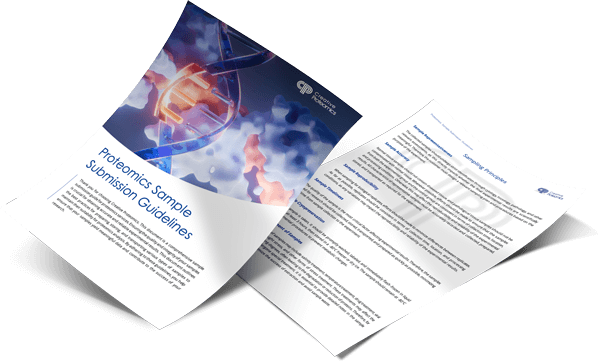- Service Details
- Case Study
Reversible protein phosphorylation is a crucial post-translational modification that exerts profound effects on numerous biological processes, including but not limited to signal transduction, cell proliferation, intercellular communication, and metabolism. However, its dysregulation is a hallmark of several complex diseases, such as Alzheimer's disease, diabetes. Protein phosphorylation involves the transfer of γ-phosphate from adenosine 5′-triphosphate (ATP) to specific amino acid residues by kinases, while dephosphorylation is carried out by phosphatases.
According to amino acids residues, protein phosphorylation can be divided into four types: O-phosphates, N-phosphates, S-phosphates and Acyl-phosphates. O-phosphates on hydroxyl residues of serine (S), threonine (T), tyrosine (Y). N-phosphates on Arginine (R), Histidine (H), Lysine (K). S-phosphates on Cysteine. Acyl-phosphates on Aspartic acid (D) or Glutamic acid (E). In eukaryotes, O-phosphates is dominated, whereas other forms are primarily observed in prokaryotes.
Understanding phosphorylation and its effects on regulatory networks and effector proteins is therefore a major endeavor for detection and treatment of disease, such as cancer, diabetes, neuropathy Diseases, etc., so the detection of phosphoproteome and phosphorylation sites is to further understand the disease and find out the relevant treatment and prevention methods.
 Figure 1. Protein phosphorylation and dephosphorylation.
Figure 1. Protein phosphorylation and dephosphorylation.
Our Phosphoproteomics Service
Phosphoproteomics analysis with LC-MS/MS seeks to identification of phosphoproteins, phosphorylated polypeptides, precise mapping, and quantification of phosphorylation site on a global scale in different state, and eventually, revealing their biological function. Due to the relatively low abundance of phosphorylation modifications in complex protein samples, efficient enrichment of phosphopeptides derived from phosphoproteins is essential to perform phosphoproteomics. Numerous strategies exist for enrichment of phosphopeptides but the most popular ones are IMAC, TiO2 and phospho-tyrosine antibody enrichment.
 Figure 2. General workflow elements for phosphoproteome characterization in biological samples.
Figure 2. General workflow elements for phosphoproteome characterization in biological samples.
Creative Proteomics has established strategies for highly specific enrichment phosphorylated peptides and a sensitive HPLC-MS/MS pipeline that can analyze multiple kinds of phosphorylation in both eukaryotic and prokaryotic organisms. In addition, we have optimized our protocol, enabling more fast and sensitive site mapping service for histidine and tyrosine phosphorylation.
Technological superiority
1. Professional detection and analysis capability: Experienced PTM research team, strict quality control system, together with ultra-high resolution detection system and professional data pre-processing and analysis capability, ensure reliable and accurate data.
2. Reproducible: Obtain consistent and reproducible inter- and intra- assay results for data analysis.
3. High specificity: Specificity >95%.
4. Multiplex, high-throughput: Deeper Coverage of Phosphorylation Site Identification, flux up to 10, 000.
5. High resolution and sensitivity: Triple TOF 5600, Q-Exactive, Orbitrap Fusion™ Tribrid™.
Application fileds
1. Extensively used in the research fields of signal transduction pathway, apoptosis, development and differentiation, and cancer mechanism.
2. Kinase/phosphatase substrate mapping.
3. Screening and identification of kinase/phosphatase activators (e.g., drug-induced protein phosphorylation).
4. Screening and identification of kinase/phosphatase inhibitors.
Samples Requirement
Tissue: animal tissue > 50 mg;
fresh plant > 100 mg;
Cell: suspension cell > 2 x 107;
adherent cell > 2 x 107;
microorganism > 50 mg or 2 x 107 cells;
Body fluid: Serum/plasma > 500 μL;
Protein: Total protein >1 mg and concentration >1 μg/μL.
How to place an order:

*If your organization requires signing of a confidentiality agreement, please contact us by email.
Our customer service representatives are available 24 hours a day, from Monday to Sunday. INQUIRY
Identification of tyrosine-phosphorylated proteins associated with lung cancer metastasis using label-free quantitative analyses.
Journal: Journal of proteome research
Published: 2010
Main Technology: Label-free quantitative proteomics
Abstract
Phosphorylation of tyrosine (p-Tyr) proteins can be involved in the invasion and metastasis of lung cancer, but the reported quantity is still limited. In this study, a label-free quantitative technique was used to investigate the phosphorylation of tyrosine proteins and their involvement in the metastatic process. A total of 335 p-Tyr sites from 276 phosphorylated proteins were identified. The label-free quantitative results showed significant differences in 36 phosphorylated peptides between samples with different invasion abilities of tyrosine phosphorylated proteins. Two novel conserved sequences and four known specific kinases and phosphorylation motif sequences, namely EGFR, Src, JAK2, and TC-PTP, were extracted from these peptides. Protein-protein interaction analysis of p-Tyr proteins revealed that 11 proteins were connected in an interaction network containing EGFR, c-Src, c-Myc, and STAT, which has been confirmed to be associated with lung cancer metastasis. Among these 11 proteins, 7 have not been reported previously, providing a better and comprehensive understanding of the mechanisms and treatment approaches for the invasion/metastasis of lung cancer.
 The newly discovered three motifs
The newly discovered three motifs
 Identification of tyrosine-phosphorylated proteins associated with lung cancer metastasis using label-free quantitative analyses.
Identification of tyrosine-phosphorylated proteins associated with lung cancer metastasis using label-free quantitative analyses.
References
- Needham, E. J., Parker, B. L., Burykin, T., et al. Illuminating the dark phosphoproteome. Science Signaling. 2019 Jan 22;12(565).
- Krug, K., Jaehnig, E. J., Satpathy, S., Blumenberg, L., et al. Proteogenomic Landscape of Breast Cancer Tumorigenesis and Targeted Therapy. Cell. 2020 Nov 25;183(5):1436-1456.
- Xu J.Y., Zhang C.C., Wang X., et al. Integrative Proteomic Characterization of Human Lung Adenocarcinoma. Cell. 2020 Jul 9;182(1):245-261.
- Zagorac I, Fernandez-Gaitero S, Penning R, et al. In vivo phosphoproteomics reveals kinase activity profiles that predict treatment outcome in triple-negative breast cancer. Nature Communications. 2018 Aug 29;9(1):3501.








